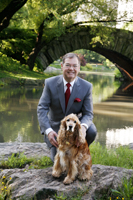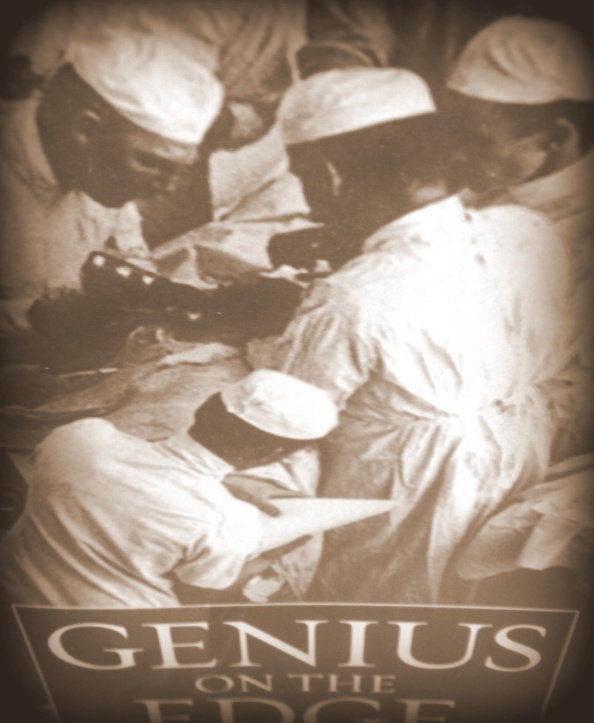Gifts for your favorite veterinarian or veterinary student!
As the holidays approach, Dr. Donald Smith offers gift ideas for the veterinarians in your lives.

Books are precious sources of inspiration and education, and they can be especially versatile in this age when we typically have a choice of electronic or print media. From time to time, I am asked by a parent of a veterinary student, or by a client of a veterinarian, to recommend a book as a gift. Though my response varies by circumstance and often what I have read most recently, I am frequently drawn to two books that I consider exceptional for all people interested in the healing professions and the social milieu of medicine.
Though each of the following books is based in the world of human health, I have found them to be inspiring to those of us with careers in veterinary medicine. The setting for both is Johns Hopkins School of Medicine, and they sequentially span the first half of the 20th century when mammalian comparative medicine was at its zenith.
The protagonists of these stories, William Halsted and Vivien Thomas, were extraordinary people, but for different reasons. Challenged by drug addiction his entire professional career, Halsted was a deeply troubled person, unable to reconcile his passion for surgical creativity with the complex personal narrative that drove him to heights of glory and depths of despair.
Thomas was a masterful and creative surgical artist. A surgeon myself, I would have loved to have personally witnessed his hands in action over the open chest. Despite having no formal medical education, he was also an imaginative scholar, able to solve complex operative challenges with apparent ease. What allowed him to reach the acme of personal achievement, however, was his equanimity amid a culture that eschewed the color of his skin until late in his career.
Both men respected and loved the animals under their care and became among the most skilled canine surgeons of the early 20th century.

(Photo by the Author)
Genius on the Edge,
by Gerald Imber, MD
(Kaplan Publishing 2010, hardcover; 2011, paperback)
William Halsted helped establish the world-famous Johns Hopkins Hospital in Baltimore in the 1890s. For over 30 years, he so fundamentally pioneered the development of surgery that every university-affiliated surgeon in America can trace his or her lineage back to one of Halsted’s residents.
My fascination as a veterinarian, however, was to realize how accomplished Halsted was as a dog surgeon. He adhered to strict sterile techniques as early as 1900. Cornell’s veterinary college, by contrast, did not adopt aseptic surgery until 1948.
Why was Halsted operating on dogs? Because that is how he and his colleagues learned and practiced new techniques for humans, and how they developed their understanding of the body in health and disease.
Halsted and his wife also kept household pets, and they considered them as much a part of their family as the most ardent pet-lover in today’s society. The book contains a poignant narrative of their mourning after the loss of one of their Dachshunds.
Partners of the Heart,
by Vivien T. Thomas
(University of Pennsylvania Press 1998, paperback)
Also from Johns Hopkins, but several decades after Halsted, this is the autobiography of Vivien Thomas, the man whom I regard as the most accomplished dog surgeon of his generation. He was not a veterinarian. He was not a physician. He was not even recognized officially as a technician because he was Black. He was classified (and for years compensated) as a janitor.
Most people who read his story or view the complementary video, Something the Lord Made, consider them to be exposés on the civil rights struggle of African-Americans.
While this is one facet of his story, I also read the book as a perspective on how advanced surgical procedures were developed in dogs as a precursor to their use in people. Thomas’s most famous operation was the correction of blue baby syndrome in 1944. Thomas operated on over 200 dogs to develop the condition experimentally, and then he corrected it. A painted portrait of Anna, his most famous canine subject and beloved mascot, still hangs in the Department of Molecular and Comparative Pathobiology at Johns Hopkins University.
Give a book—a good book— to your favorite veterinarian or veterinary student. Better yet, get two and keep one for yourself.
Find this and other interesting stories at Perspectives in Veterinary Medicine on the Veritas web site.




